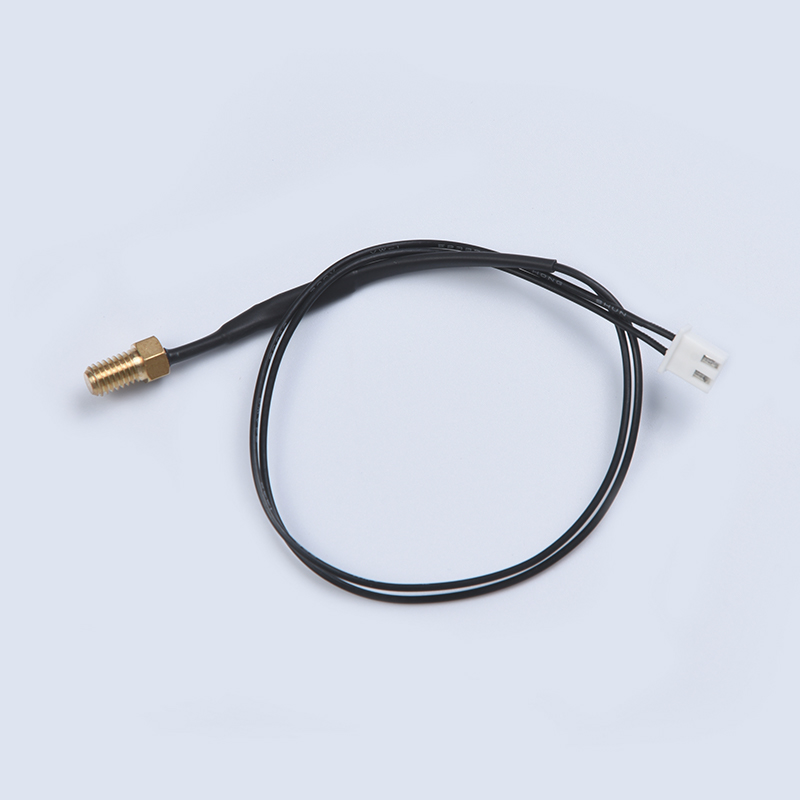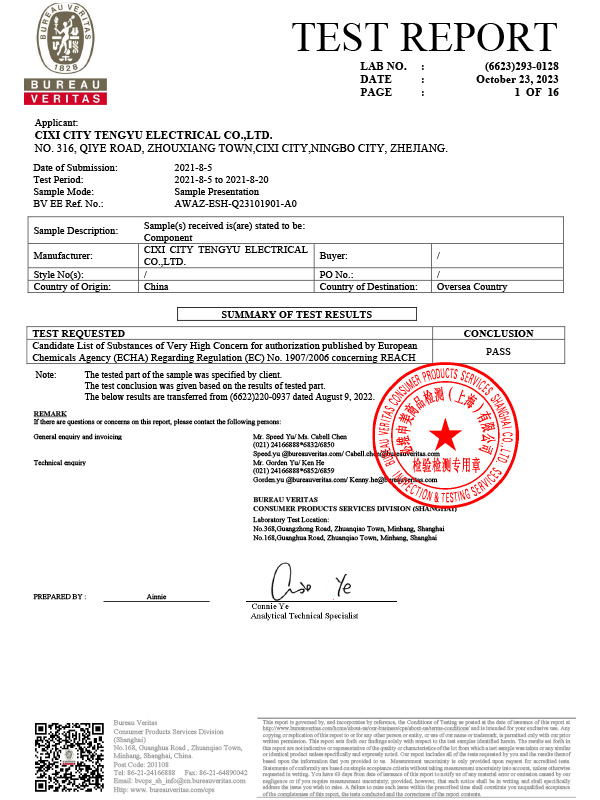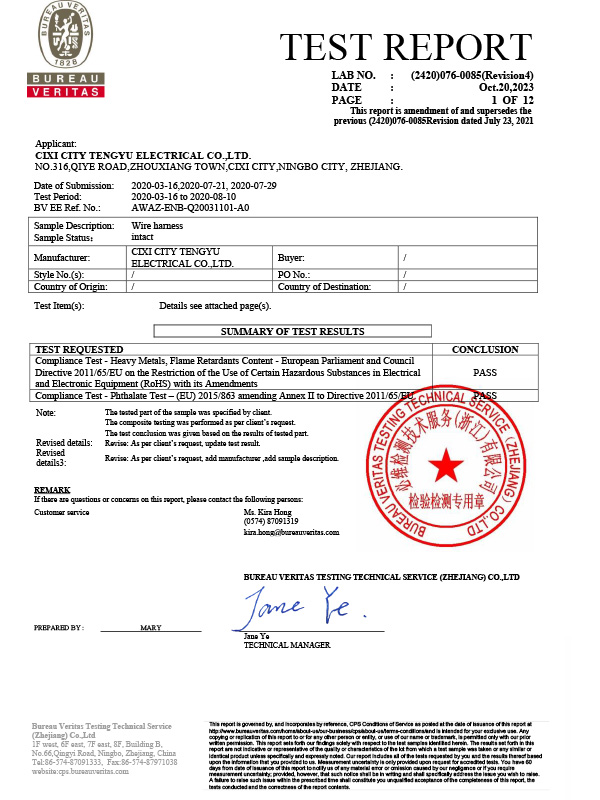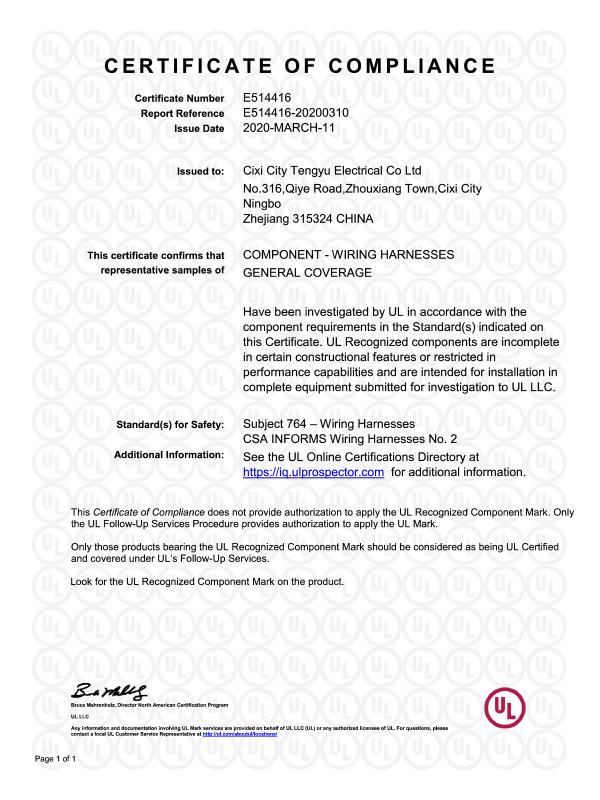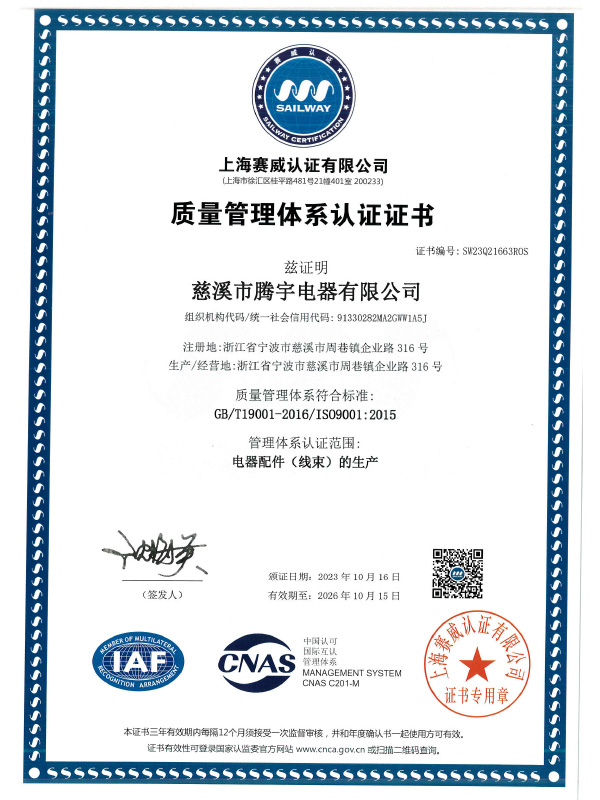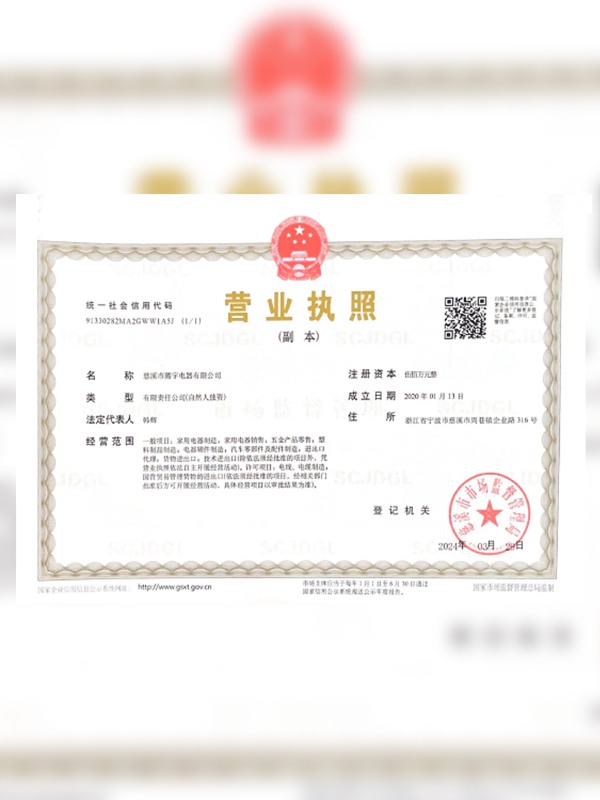What is an electric kettle NTC temperature sensor and how does it work?
Introduction to NTC Temperature Sensors in Electric Kettles
An electric kettle has become a standard household appliance due to its convenience and efficiency in boiling water. Central to its reliable operation is the temperature sensing component, most commonly the Negative Temperature Coefficient (NTC) temperature sensor. This sensor plays a vital role in detecting water temperature accurately, enabling precise heating control and ensuring safety functions such as boil-dry protection. For companies like Teng Yu Electrical Appliance, which has over twenty years of development and accumulated expertise, the design and production of reliable NTC sensors form an integral part of their product portfolio. The company’s international-level production technology and strict process management make it possible to manufacture NTC sensors that meet the demands of both domestic and international markets.
Basic Concept of an NTC Temperature Sensor
An NTC temperature sensor is a thermistor whose resistance decreases as the temperature rises. This characteristic allows the sensor to measure temperature changes through variations in electrical resistance. When embedded in an electric kettle, the sensor communicates real-time water temperature information to the kettle’s control circuit. This enables the system to determine when the water has reached boiling point or when it is approaching unsafe conditions. The simplicity of the resistance-temperature relationship makes the NTC sensor an efficient and cost-effective solution compared to other temperature measurement devices.
How the Sensor Works in Practical Application
In an electric kettle, the NTC sensor is placed close to the heating element or immersed near the water chamber, where it can directly detect temperature changes. As water heats up, the sensor’s resistance decreases. This change is processed by the kettle’s control circuit, which interprets the resistance value as a specific temperature. Once the water reaches boiling point, the circuit signals the kettle to switch off the heating element, preventing unnecessary energy consumption and ensuring safety. Beyond boiling control, the sensor can also manage different temperature presets in advanced kettles, allowing users to heat water for tea, coffee, or infant formula at precise temperatures.
Role of Teng Yu Electrical Appliance in Sensor Development
Teng Yu Electrical Appliance has built a reputation for producing high-quality temperature sensing components through continuous innovation and strict quality control. With internationally advanced production technology and a scientific management system, the company ensures that every NTC sensor meets required performance standards. The presence of senior professionals in research and development, production, and quality management provides the foundation for integrating innovation into reliable sensor solutions. This commitment aligns with the company’s philosophy of “people-oriented, innovation leads to development,” positioning it as a trusted partner for appliance manufacturers worldwide.
Key Performance Parameters of an Electric Kettle NTC Sensor
The performance of an NTC sensor in an electric kettle can be defined by several technical parameters. These include resistance at a standard temperature (typically 25°C), tolerance levels, response time, thermal dissipation constant, and long-term stability. Manufacturers like Teng Yu Electrical Appliance emphasize strict control over these parameters to ensure consistency and durability.
| Parameter |
Typical Value Range |
Importance in Electric Kettles |
| Resistance at 25°C (R25) |
10kΩ – 100kΩ |
Defines baseline for calibration |
| B-Value (Beta Constant) |
3000K – 4500K |
Determines resistance change per degree |
| Response Time |
1s – 10s |
Ensures accurate temperature tracking |
| Operating Temperature Range |
-40°C to 250°C |
Covers kettle heating and cooling cycles |
| Tolerance |
±1% – ±5% |
Reflects measurement accuracy |
Contribution to Energy Efficiency
The accurate temperature measurement of NTC sensors contributes directly to energy efficiency in electric kettles. By detecting the exact moment water reaches boiling point, the sensor allows the heating element to switch off promptly, avoiding unnecessary energy use. In models with temperature presets, the sensor ensures water is heated only to the required level, further reducing energy waste. Companies such as Teng Yu Electrical Appliance integrate these features into their sensor designs, supporting global efforts toward energy-efficient appliances.
Safety Functions Enabled by NTC Sensors
Safety is a critical factor in electric kettle design. NTC sensors enable functions such as automatic shutoff when water boils, prevention of overheating, and protection against boil-dry conditions when the kettle operates without sufficient water. These features protect both the user and the appliance. Teng Yu Electrical Appliance, with its strict production process management and advanced quality control systems, ensures that its NTC sensors maintain reliable safety functions throughout their lifespan, reinforcing consumer trust.
Durability and Long-Term Performance
An NTC sensor in an electric kettle is exposed to repeated heating and cooling cycles, high humidity, and direct contact with steam. For this reason, durability and stability are essential characteristics. Teng Yu Electrical Appliance employs high-quality encapsulation materials and advanced manufacturing techniques to produce sensors that can withstand long-term use without performance degradation. The company’s continuous investment in research and development supports improvements in durability, ensuring compatibility with the long lifespan of modern electric kettles.
Customization for Different Kettle Designs
Electric kettles vary widely in design, ranging from basic models with single on/off functionality to advanced kettles with digital displays and multiple temperature settings. To meet these diverse requirements, Teng Yu Electrical Appliance offers customization of NTC sensor parameters, including resistance values, tolerance levels, encapsulation methods, and mounting styles. This flexibility allows appliance manufacturers to integrate sensors seamlessly into their designs, ensuring optimal performance across different product categories.
What is the accuracy and long-term stability of an electric kettle NTC temperature sensor?
Introduction to Electric Kettle NTC Temperature Sensors
An electric kettle NTC temperature sensor is a critical component designed to measure and regulate the water temperature within the appliance. NTC refers to “Negative Temperature Coefficient,” meaning that the resistance of the thermistor decreases as the temperature increases. This property makes it highly suitable for applications where precise monitoring of heating processes is required. In electric kettles, such sensors ensure water is heated to safe levels, prevent overheating, and contribute to consistent performance.
Teng Yu Electrical Appliance, with more than twenty years of development, applies internationally advanced production technology and a strict quality management system to design reliable temperature sensors. By integrating research, development, production, and quality control, the company contributes to the advancement of NTC sensor solutions used in electric kettles for both domestic and global markets.
The Role of Accuracy in Temperature Sensors
Accuracy in an electric kettle NTC temperature sensor refers to the ability of the sensor to detect and reflect the true water temperature without significant deviation. High accuracy ensures that the kettle automatically stops heating when water reaches the boiling point, protecting users from hazards and saving energy. A deviation of even a few degrees could lead to incomplete boiling, unnecessary overheating, or excessive energy consumption.
For a manufacturer such as Teng Yu Electrical Appliance, accuracy is achieved through rigorous calibration, the selection of reliable materials, and precision manufacturing processes. This balance allows the sensor to maintain consistency across different operating conditions, which is a key requirement for global customers who expect reliability in daily use.
Factors Affecting Sensor Accuracy
Several factors influence the accuracy of electric kettle NTC temperature sensors. These include the resistance tolerance of the thermistor, the material quality of the sensor housing, and the ability of the design to minimize environmental noise or interference. For example, thermistors with tighter tolerance bands typically provide more precise readings, which is essential for kettles where boiling control must be exact.
The stability of the circuit design and the way the sensor is positioned in the kettle also play a role. If the sensor is not in direct contact with the water or heating element, its readings may lag, leading to slight inaccuracies. Teng Yu Electrical Appliance addresses these challenges by employing a scientific management system that ensures strict control of production processes and final product testing.
Key Factors Influencing Accuracy
| Factor |
Impact on Accuracy |
Manufacturing Approach at Teng Yu Electrical Appliance |
| Resistance tolerance |
Determines measurement precision |
Use of narrow tolerance thermistors |
| Sensor housing material |
Affects thermal conductivity |
Selection of stable, heat-resistant materials |
| Circuit design |
Reduces interference and noise |
Optimization of electronic circuitry |
| Placement within the kettle |
Determines response time and accuracy |
Careful design to ensure direct heat exposure |
Importance of Long-Term Stability
Long-term stability refers to the ability of the NTC temperature sensor to maintain its accuracy and functionality over years of repeated use. Electric kettles often undergo daily heating and cooling cycles, which expose the sensor to thermal stress, mechanical stress, and potential water-related corrosion. Without long-term stability, even initially accurate sensors could drift over time, leading to safety risks and reduced performance.
Teng Yu Electrical Appliance emphasizes this stability by applying advanced manufacturing technologies and high-quality materials. Through years of research and technical accumulation, the company ensures that its sensors continue to provide consistent readings across extended product lifespans.
Mechanisms of Sensor Degradation Over Time
Despite robust designs, all electronic components experience some degree of aging. For NTC temperature sensors, degradation may occur due to oxidation of sensor materials, thermal fatigue, or changes in resistance caused by long-term exposure to water vapor and mineral deposits. Repeated heating and cooling cycles can cause micro-cracks in sensor coatings or shifts in calibration.
Teng Yu Electrical Appliance mitigates these risks by applying protective coatings and performing endurance testing during production. This process simulates long-term use and identifies potential weaknesses, enabling improvements before products are released to the market.
Common Causes of Long-Term Sensor Drift
| Cause of Degradation |
Effect on Performance |
Teng Yu Preventive Measures |
| Thermal cycling fatigue |
Gradual change in resistance |
Endurance testing and robust material selection |
| Oxidation of metal contacts |
Poor electrical conductivity |
Protective coatings and sealed housings |
| Water vapor exposure |
Sensor drift or failure |
Moisture-resistant encapsulation |
| Mineral buildup |
Reduced thermal response |
Surface treatments to reduce deposits |
Measuring Long-Term Accuracy in Practical Use
In practice, the long-term performance of an electric kettle NTC temperature sensor is evaluated by measuring its accuracy after thousands of heating cycles. This involves checking whether resistance changes remain within acceptable tolerances over time. If the drift is minimal, the sensor is considered stable and reliable for continued use.
Manufacturers like Teng Yu Electrical Appliance conduct accelerated life testing to simulate years of operation within a shorter timeframe. By monitoring resistance changes and comparing results with initial calibration values, the company ensures that its sensors maintain precision and stability over the expected product lifecycle.
Applications of Accuracy and Stability in Electric Kettles
The accuracy and long-term stability of NTC temperature sensors directly influence user safety and energy efficiency in electric kettles. For instance, precise sensors prevent kettles from boiling dry, which can otherwise damage heating elements or pose hazards. Stable performance ensures that kettles continue to function consistently for years, reducing the need for replacements and promoting customer trust.
Teng Yu Electrical Appliance integrates these qualities into its design philosophy, producing sensors that align with the company’s business goal of providing reliable products and services to global customers.




 中文简体
中文简体